 Met de ondertekening van het contract tussen opdrachtgever Kroonenberg Groep en J.P. van Eesteren kan de bouw van de twee wooncomplexen op de hoek van de Buitenveldertselaan en de Van Nijenrodeweg in Amsterdam officieel van start. Ton Vaags, directievoorzitter van J.P. van Eesteren, is trots op de nieuwe klus: “Werken voor een gerenommeerde opdrachtgever aan zo’n architectonisch hoogstandje op deze locatie in Amsterdam is geweldig. Maar vooral ook een uitdaging om in een dichtbevolkt gebied een woontoren van 75 meter en een 35 meter hoog appartementencomplex toe te voegen. Een technisch complexe en logistiek interessante operatie.”
Met de ondertekening van het contract tussen opdrachtgever Kroonenberg Groep en J.P. van Eesteren kan de bouw van de twee wooncomplexen op de hoek van de Buitenveldertselaan en de Van Nijenrodeweg in Amsterdam officieel van start. Ton Vaags, directievoorzitter van J.P. van Eesteren, is trots op de nieuwe klus: “Werken voor een gerenommeerde opdrachtgever aan zo’n architectonisch hoogstandje op deze locatie in Amsterdam is geweldig. Maar vooral ook een uitdaging om in een dichtbevolkt gebied een woontoren van 75 meter en een 35 meter hoog appartementencomplex toe te voegen. Een technisch complexe en logistiek interessante operatie.”
De komende 2,5 jaar realiseert de bouwer 248 appartementen, waarvan 40% in de middeldure huur en 60% in de vrije huursector valt. Er wordt gestart met de realisatie van een ondergrondse tweelaags parkeergarage voor ongeveer 130 parkeerplaatsen. Daarna bouwt J.P. van Eesteren verder aan de plint die ruimte biedt aan circa 500 m2 commerciële functies. Ook komt er een grote fietsenstalling, met plaats voor meer dan 700 fietsen.
Het ontwerp van het gebouw komt van het Amerikaanse architectenbureau Studio Gang uit Chicago. Samen met architectenbureau Rijnboutt werd een markant ontwerp gemaakt. Met name de 75 meter hoge toren is een eyecatcher. Landschapsarchitect Piet Oudolf ontwierp een plaza tussen beide gebouwen in. Het interieurontwerp komt van Piet Boon.Lesley Bamberger, directeur van Kroonenberg Groep is blij met de betrokkenheid van J.P. van Eesteren: “Bij de bouw en voor de ontwikkeling van onze vastgoedportefeuille werken we samen met partijen die kwaliteit bieden.
J.P. van Eesteren heeft inmiddels stevige voet aan de grond op de Amsterdamse markt. Met een project als het Element hotel hebben ze al bewezen projecten als deze succesvol te kunnen realiseren.” Niet alleen qua techniek en logistiek is een hoog bouw-IQ vereist. Bouwen in een dichtbevolkte buurt is ook een uitdaging. Ton Vaags: “Als omgevingsbewuste bouwer realiseren we ons dat onze aanwezigheid niet onopgemerkt blijft. We zijn te gast in de wijk en zetten daarom ook in op goede communicatie en verbinding met de buurt.”
 The skyscraper has a history extending back more than 120 years, but it entered a new phase of innovation and acceleration in the late 1960s.
The skyscraper has a history extending back more than 120 years, but it entered a new phase of innovation and acceleration in the late 1960s. De hoogbouwambities van verschillende Nederlandse steden reiken tot in de wolken. Zo wordt in Utrecht ‘eindelijk’ hoger dan de Domtoren (113 meter) gebouwd en is in Den Haag en Eindhoven ruimte voor meerdere torens die de skyline van die steden zal doen veranderen. Het is binnenstedelijke verdichting in de overtreffende trap. Steeds nadrukkelijker dringt de vraag zich op hoe we die sterk verdichte stadsdelen, en in het bijzonder die hoogbouw, bereikbaar houden >>>
De hoogbouwambities van verschillende Nederlandse steden reiken tot in de wolken. Zo wordt in Utrecht ‘eindelijk’ hoger dan de Domtoren (113 meter) gebouwd en is in Den Haag en Eindhoven ruimte voor meerdere torens die de skyline van die steden zal doen veranderen. Het is binnenstedelijke verdichting in de overtreffende trap. Steeds nadrukkelijker dringt de vraag zich op hoe we die sterk verdichte stadsdelen, en in het bijzonder die hoogbouw, bereikbaar houden >>> 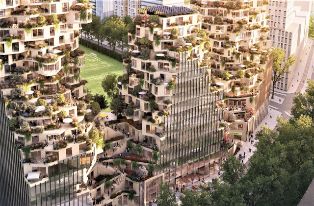 Klaas de Boer deinst er ook niet voor terug zijn ‘eigen’ Zuidas te noemen als voorbeeld van hoe je hoogbouw stedenbouwkundig goed inpast. ‘Op de Zuidas hebben we een schaakpatroon toegepast waarin hoogbouw is afgewisseld met laagbouw voor goed uitzicht, en bezonning en beschaduwing op een goed wijze tegen elkaar zijn afgewogen.’
Klaas de Boer deinst er ook niet voor terug zijn ‘eigen’ Zuidas te noemen als voorbeeld van hoe je hoogbouw stedenbouwkundig goed inpast. ‘Op de Zuidas hebben we een schaakpatroon toegepast waarin hoogbouw is afgewisseld met laagbouw voor goed uitzicht, en bezonning en beschaduwing op een goed wijze tegen elkaar zijn afgewogen.’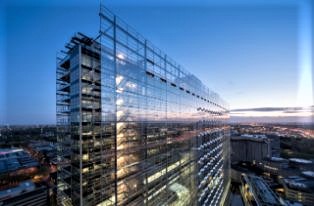 The Council on Tall Buildings and Urban Habitat celebrated a crop of new buildings and urban developments around the world at its 17th Annual CTBUH Awards Program in Shenzhen. The CTBUH Awards Jury has now announced the winners across 20 award categories, including the top-billed “Best Tall Building Worldwide” distinction, which was given to
The Council on Tall Buildings and Urban Habitat celebrated a crop of new buildings and urban developments around the world at its 17th Annual CTBUH Awards Program in Shenzhen. The CTBUH Awards Jury has now announced the winners across 20 award categories, including the top-billed “Best Tall Building Worldwide” distinction, which was given to 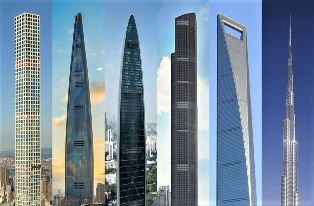 Humanity has become obsessed with breaking its limits, creating new records only to break them again and again. In fact, our cities’ skylines have always been defined by those in power during every period in history. At one point churches left their mark, followed by public institutions and in the last few decades, it’s commercial skyscrapers that continue to stretch taller and taller.
Humanity has become obsessed with breaking its limits, creating new records only to break them again and again. In fact, our cities’ skylines have always been defined by those in power during every period in history. At one point churches left their mark, followed by public institutions and in the last few decades, it’s commercial skyscrapers that continue to stretch taller and taller.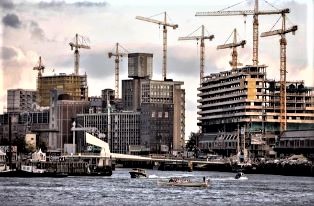 De Gemeente Rotterdam maakt concrete afspraken met projectontwikkelaars en corporaties om de bouw van huizen te versnellen. Bouwplannen worden vooraf nauwkeurig onderzocht om zo snel en efficiënt mogelijk alle gemeentelijke procedures te doorlopen. Zodra plannen rond zijn, komen er geen wijzigingen meer die tot vertraging kunnen leiden. Ontwikkelaars en bouwers met een goed plan, komen sneller in aanmerking om te ontwikkelen als hiervoor gemeentegrond nodig is. De gemeente wil hiervoor het gronduitgiftebeleid aanpassen.
De Gemeente Rotterdam maakt concrete afspraken met projectontwikkelaars en corporaties om de bouw van huizen te versnellen. Bouwplannen worden vooraf nauwkeurig onderzocht om zo snel en efficiënt mogelijk alle gemeentelijke procedures te doorlopen. Zodra plannen rond zijn, komen er geen wijzigingen meer die tot vertraging kunnen leiden. Ontwikkelaars en bouwers met een goed plan, komen sneller in aanmerking om te ontwikkelen als hiervoor gemeentegrond nodig is. De gemeente wil hiervoor het gronduitgiftebeleid aanpassen. Either as singular outcroppings or as part of a bustling center,
Either as singular outcroppings or as part of a bustling center, 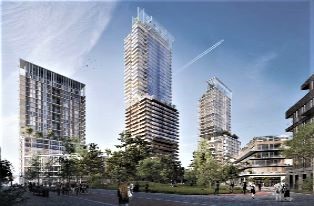 Op de hoogbouwkavel in Leidsche Rijn Centrum Noord komt het plan
Op de hoogbouwkavel in Leidsche Rijn Centrum Noord komt het plan 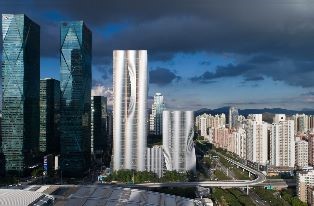 Rising high above the ground,
Rising high above the ground,